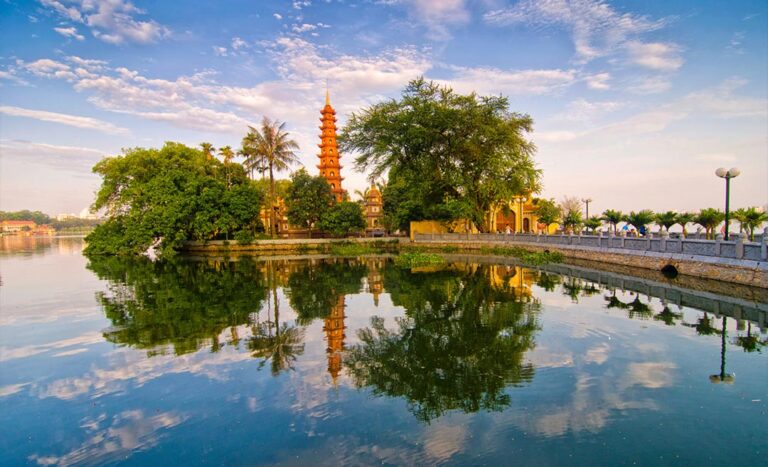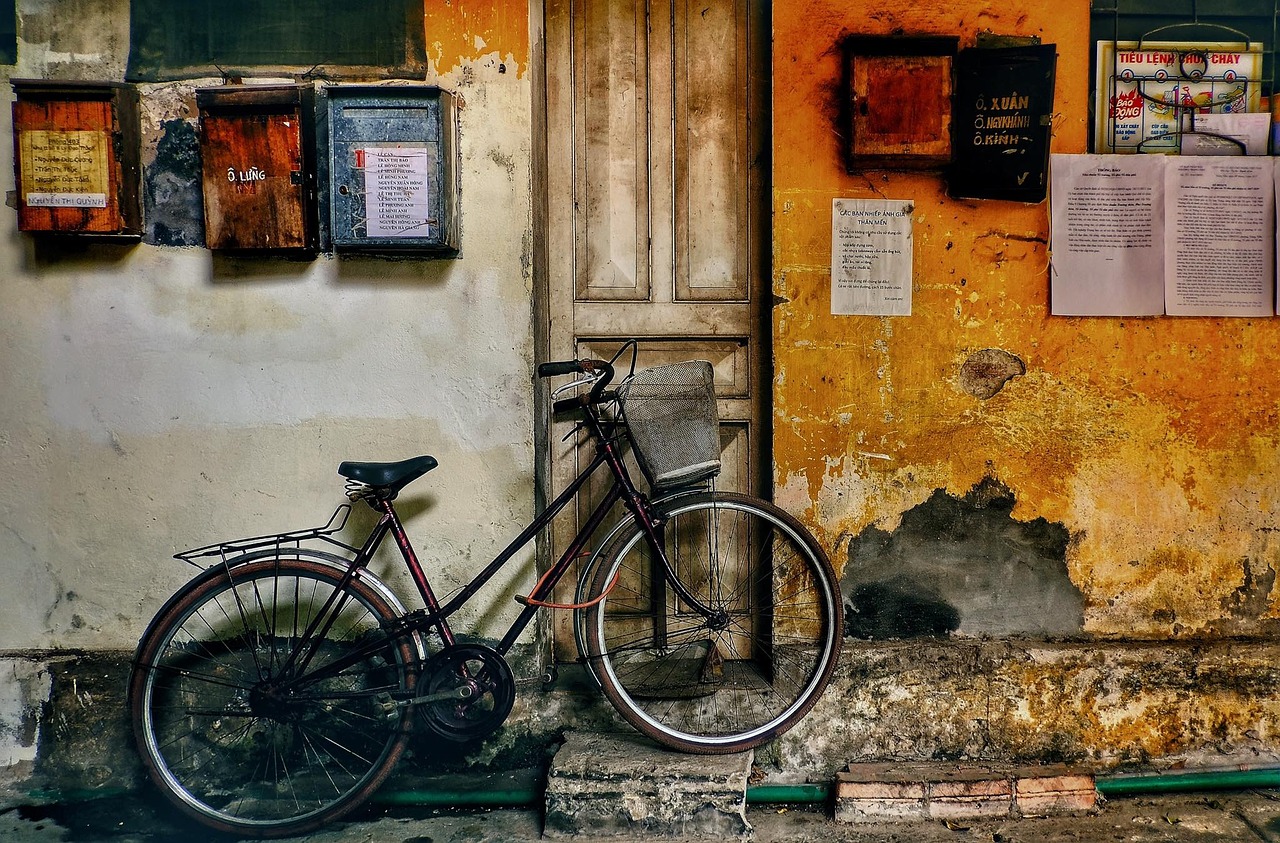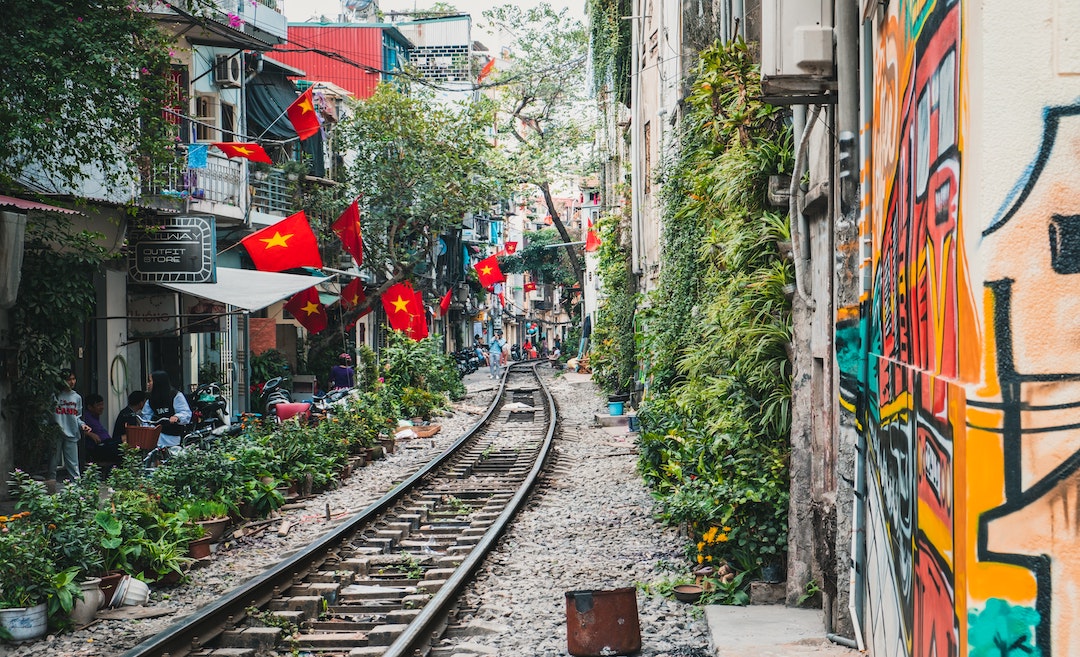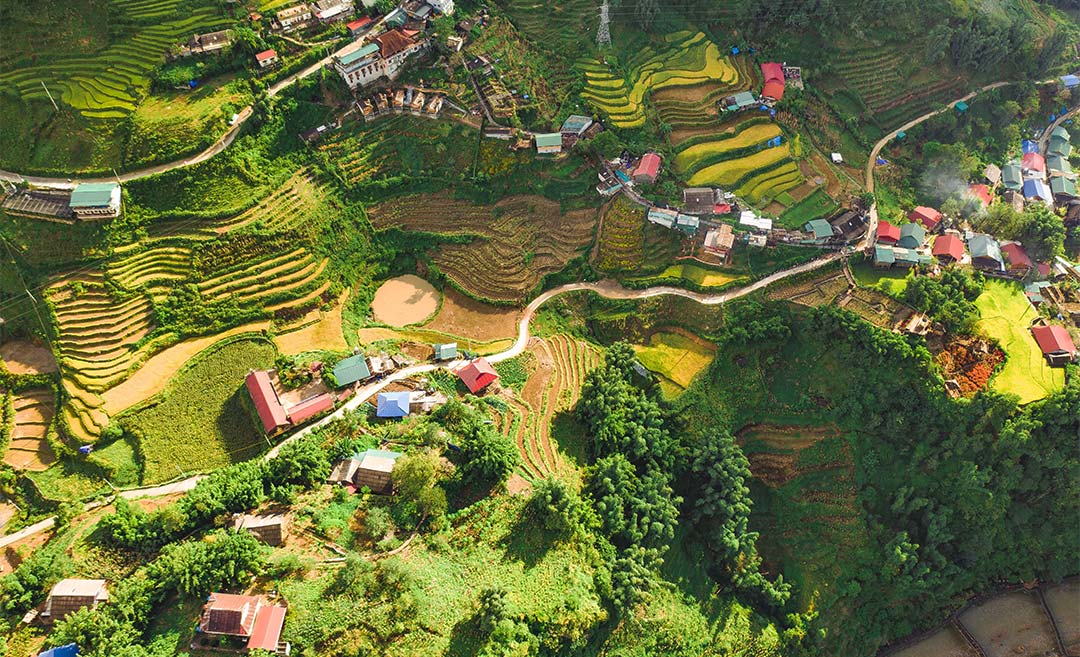Hanoi, the Vietnamese capital, is home to some seven million people who live in a city with a long history. While Hanoi’s traffic appears chaotic, there is a system, and crossing the road means slowly inching forward through squadrons of motorcycles that will part to allow you to pass.
Hanoi in all its glory
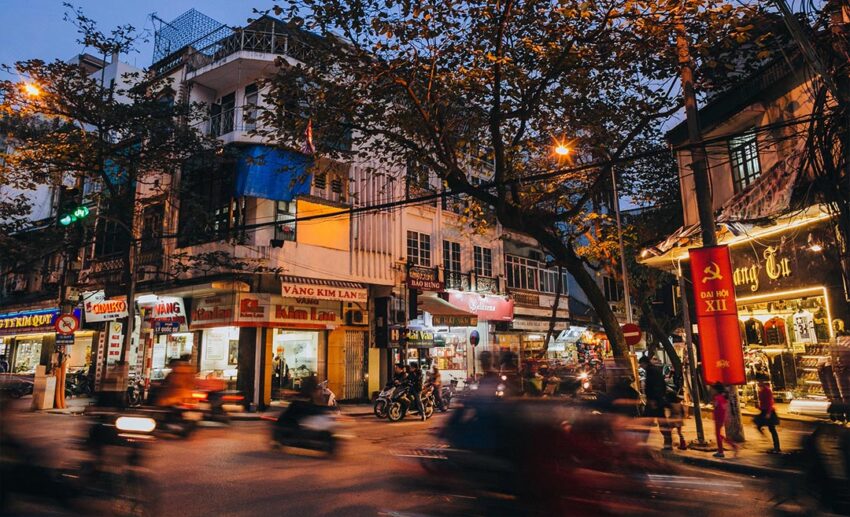
The central lake, called Hoan Kiem, is one of Hanoi’s finest assets. In a city that is over 1,000 years old, there are numerous heritage buildings to admire. One of the great joys of Hanoi is strolling around the lake and walking over the ornate red wooden bridge to Ngoc Son Temple. Tran Quoc Pagoda, near West Lake on the outskirts of town, is another temple that’s worth visiting, although it is some distance from the city centre.
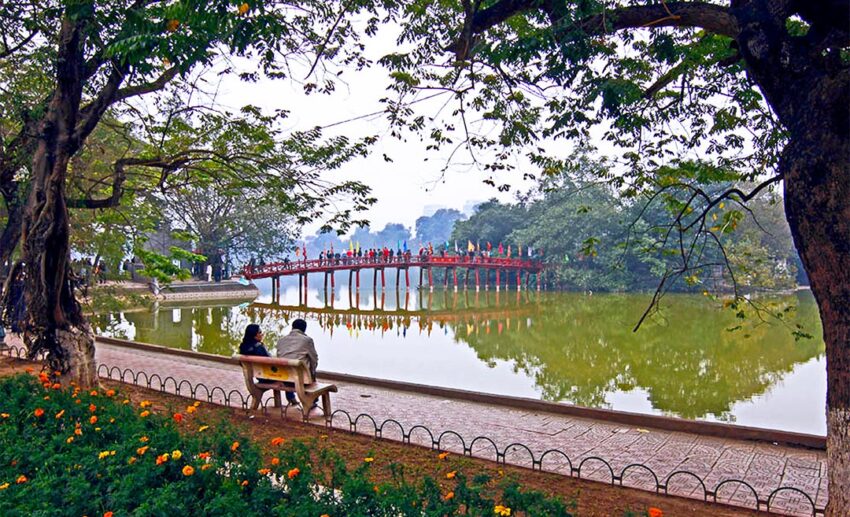
Weekends are an especially wonderful time to visit central Hanoi, as the road around Hoan Kiem and a few others are blocked off to traffic to make them pedestrian-only zones. Tens of thousands of residents come out to play, stroll, exercise, and be entertained by a variety of buskers.
Explore the Old Quarter with its trade streets, water puppet shows, and not far away, the Opera House. Culture vultures should also explore the Vietnam Museum of Ethnology with its art, tribal collection, and various ethnic houses located in the gardens.
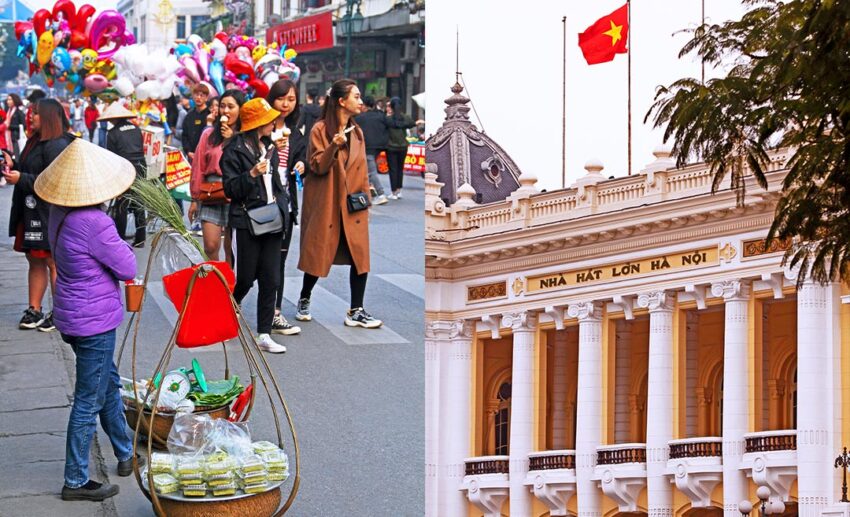
Using the lake as a reference point, getting lost in the Old Quarter is well worth considering, as someone will eventually point you in the direction of your hotel as and when required.
One of Hanoi’s most popular tourist activities is visiting the monument of the late Uncle Ho Chi Minh. Be prepared to be sombre and respectful and resist the temptation to take a selfie with the former Vietnamese leader, as it isn’t permitted. Visiting the revered former leader is an essential ritual for Vietnamese from out of town.
Street food paradise
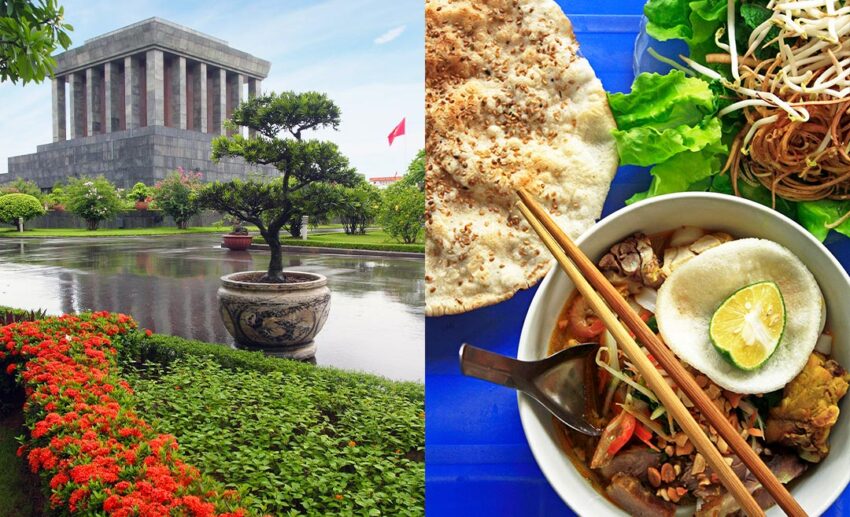
Visitors to Vietnam soon discover the fabulous food and how subtle spices combine to offer delicacies, unlike most other regional cuisines. Vietnamese dishes are more fragrant through the subtle use of spices and herbs, and many are served with a specific sauce as an accompaniment. Nuoc mam cham, or fish sauce, is essential in these sauces and Vietnamese cooking.
Few Vietnamese dishes are complete without fresh herbs, either as a garnish or as an integral component. Some specialities are eaten wrapped in fresh lettuce leaves, along with herbs like mint, fennel, dill, coriander, and basil to complement the spices.
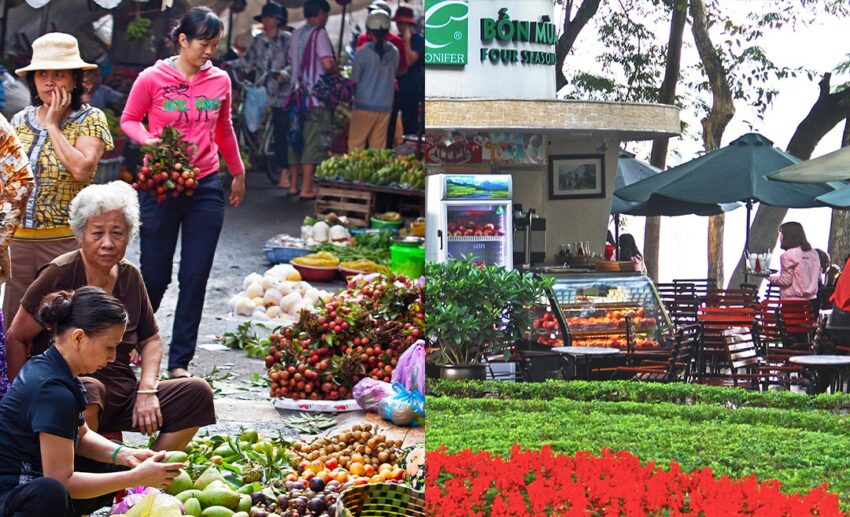
Dining in the streets and shopping in markets are highly recommended activities. Possibly the best-known Vietnamese dish is noodle soup, or pho (pronounced fur), and although it’s famous around the globe, it doesn’t get any better than in Vietnam. Pho is sold throughout Vietnam, from venues like streetside stalls to restaurants in international hotels. Beef (pho ba) and chicken (pho ga) are standards, and fresh sprouts, greens, lime wedges, and chilli often accompany bowls of them.
Coffee is taken seriously in Vietnam, and in Hanoi, the Bon Mua (Four Seasons) coffee kiosk beside Hoan Kiem Lake is a favourite with locals and tourists. You can enjoy coffee poured through an aluminium filter or iced coffee (café sua da). Some outlets offer the much-lauded and expensive caphe cut chon (known in Malaysia as kopi luwak).
In other parts of the city, the locals enjoy their coffee while seated on low stools and tables along the pavement or in open markets. The coffee is just as good there, and the ambience is more atmospheric. Local coffee concepts like Nguyen and Highland Coffee give global coffee concepts a run for their money.
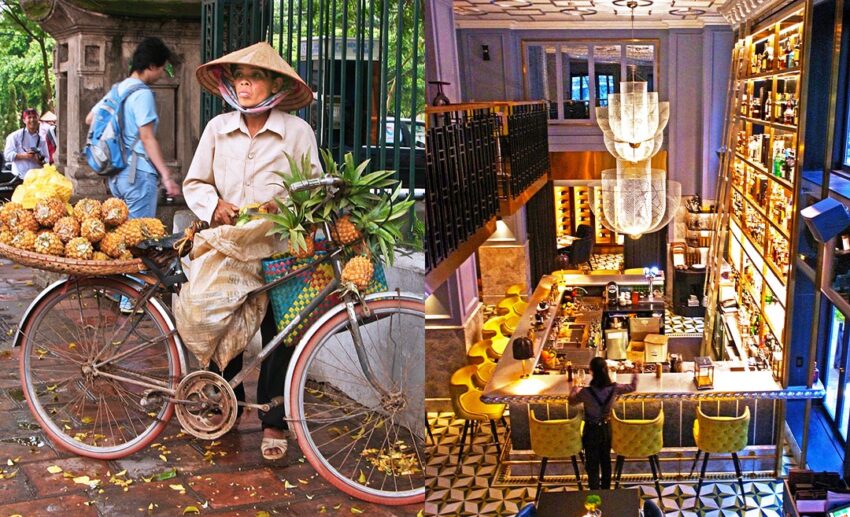
The French colonialists left an indelible mark on Vietnamese cuisine, and now a handful of French restaurants are some of Hanoi’s hottest dining options. Some of Hanoi’s most popular restaurants are Colette French Bistro & Wine Bar, La Badiane, and Maison Vie.
For fine French dining, Le Beaulieu at Hotel Métropole is without equal, having operated in its current space since 1901. It has been recently refurbished with an elegant and sophisticated new design to retain its classical opulence but with contemporary detailing. Enjoy Sunday’s Champagne brunch, which is a most refined affair.
The wine list features over 600 estates, including over 100 Grand Cru Classés and wines from leading French chateaux. The restaurant morphs into an open-air section called La Terrasse, the place to be seen in the best traditions of a Parisian café.
There are several classic and iconic bars to investigate like The Haflington, USEbar, Standing Bar, and Angelina. In the Hotel Métropole, Angelina is one of those Asian bars where you know you just want to soak up the old-timey ambience and enjoy cocktails by design, craft beers, and shelves full of whisky.
A fun late-night activity is to gather on one of many street corners, pull up a low plastic stool, and enjoy the popular and budget-friendly low-alcohol brew called bia hoi.
Serial shoppers
Vietnam is one of the region’s best shopping destinations and the source of stylish interior items like silks, lacquerware, cotton, ceramics, and lampshades. Fashion accessories, clothes, and artwork are popular items, and serial shoppers should travel lightly to return home with their retail bounty. Handicraft shops are around Cathedral Street (or Pho Nha Tho), while Studio Tho on Ma May Street is well-stocked with Vietnamese art.
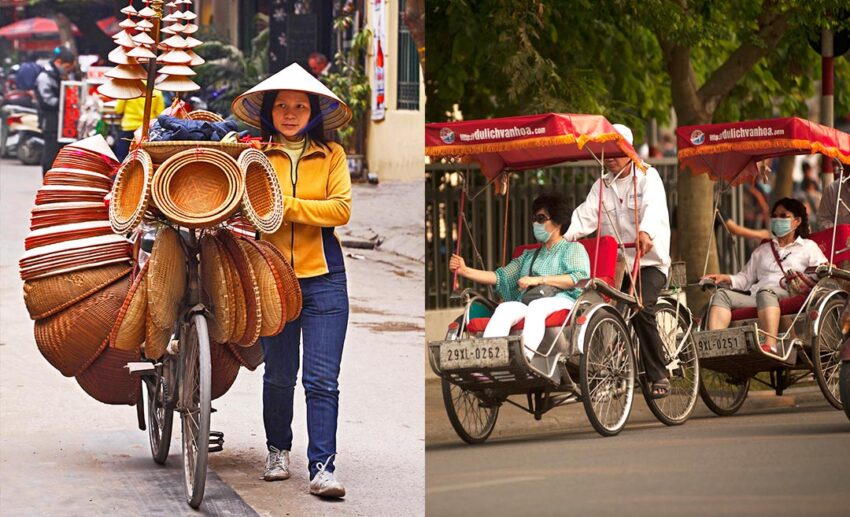
Be cautious of the traffic while zipping between shops and along the narrow streets of downtown Hanoi. Hanoi is a city where bikers reign supreme, and pedestrians are nervous. However, several streets around Hoan Kiem Lake are car-free at the weekend, and it’s lovely to see the locals making the most of their new-found space. Walking around the gardens surrounding the lake and Old Quarter is recommended, although hiring a cyclo for an hour or so is a fun way to discover the city.
Hanoi travel tips
Getting there from Kuala Lumpur: Value-for-money, AirAsia flies daily to Hanoi, and the flight takes under four hours. What you save on the airfare to Hanoi can be used for dining, shopping, and bar-hopping.
Time difference: Hanoi time is an hour behind Kuala Lumpur, so staying in touch with loved ones is easy.
Stay in celebrity suites such as the Charlie Chaplin Suite in the Sofitel Legend Métropole Hanoi (Credit Métropole Hotel).
Where to stay: Sofitel Legend Métropole Hanoi is Vietnam’s grand heritage hotel. Kings, presidents, movie stars, and writers have sought refuge here over the years. Guests can join one of two daily hotel tours of the historic bunkers where guests sheltered from bombing United States bombing missions in 1965 during the Vietnam War (what the locals call the American War).
Visas to-know: While Malaysians don’t require a visa to visit, those who travel on other passports must check the requirements. Electronic visas are available here.
David Bowden is the author of Enchanting Vietnam.
All images by David Bowden unless specified otherwise.
